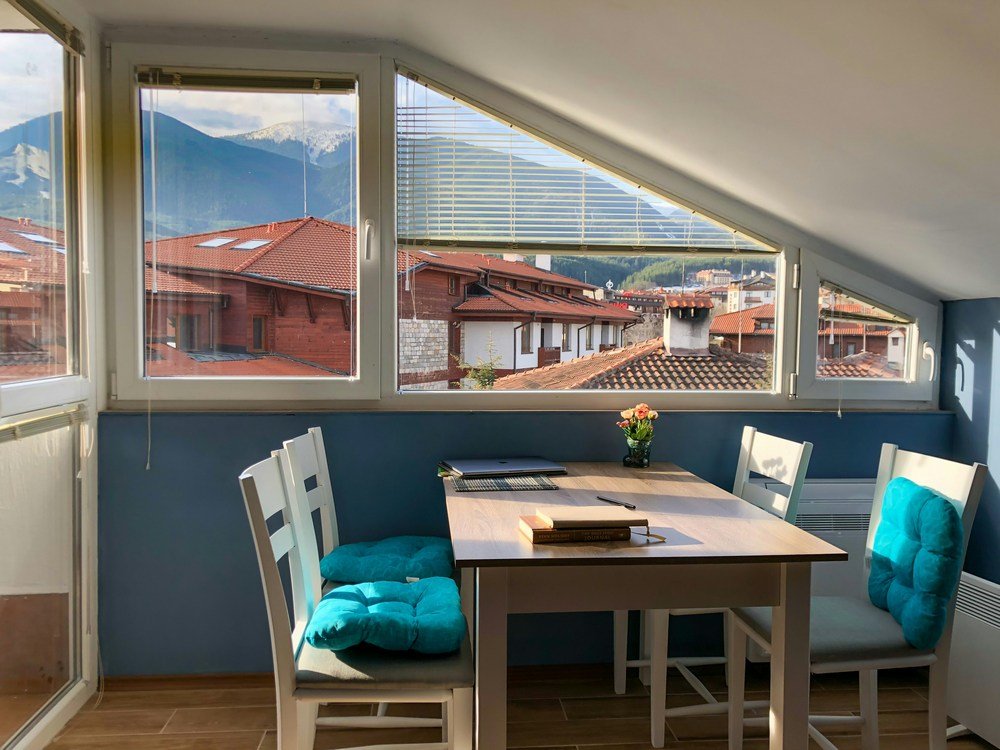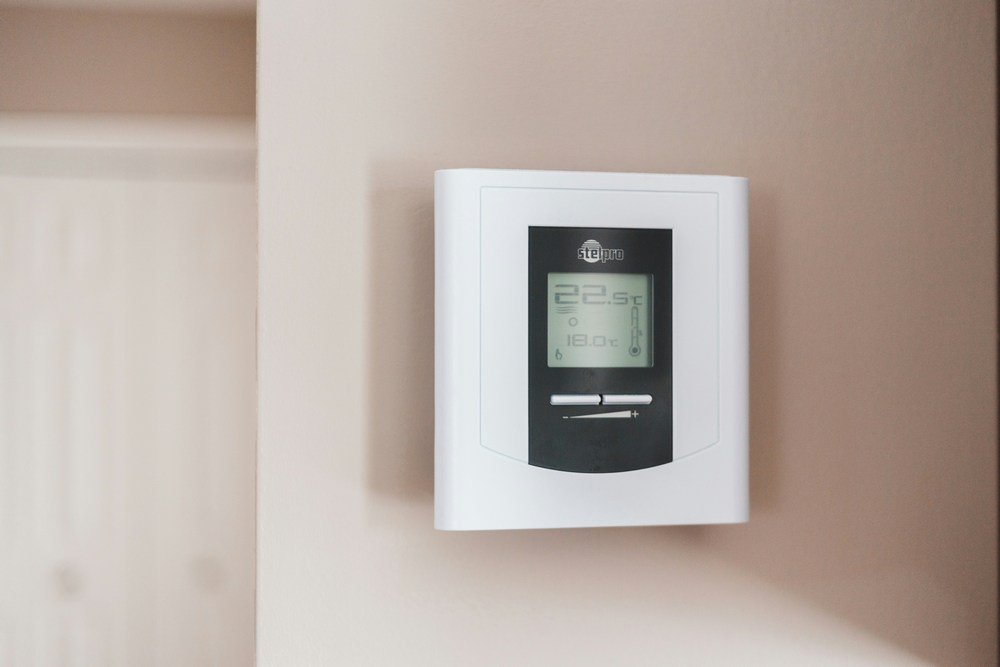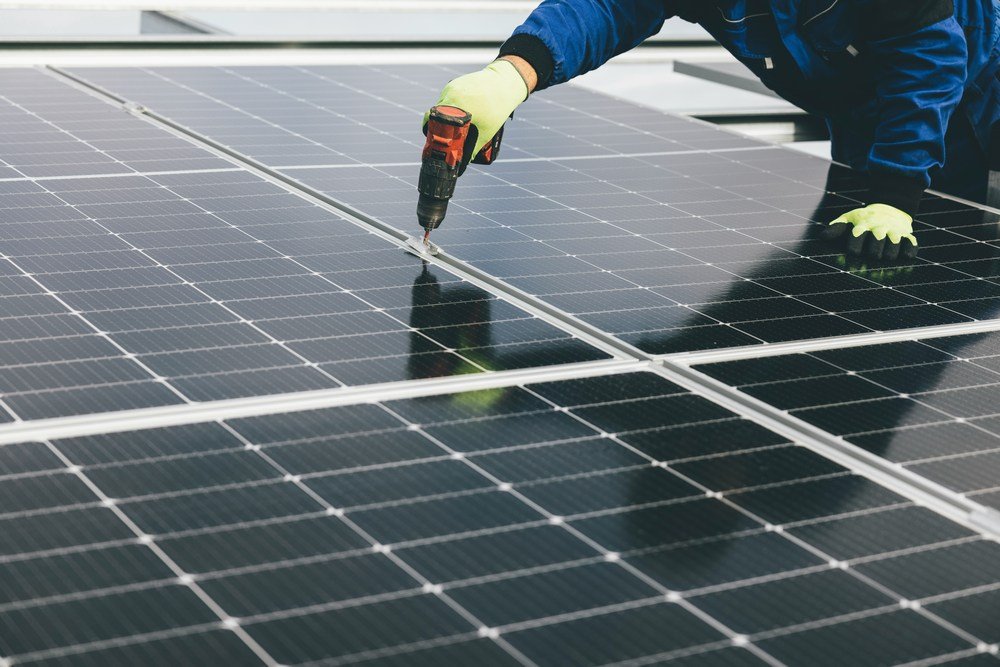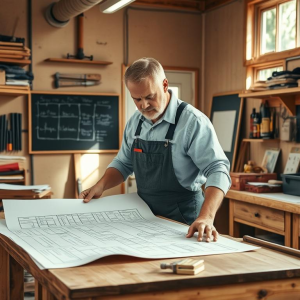Last Updated on March 19, 2025 by teamobn
In today’s environmentally conscious world, homeowners are seeking ways to reduce their carbon footprint and live more sustainably. Energy efficiency is a key component of this green lifestyle, offering both environmental advantages and helping homeowners by reducing utility bills and increasing the overall value of a home.
From simple upgrades like replacing light bulbs to major renovations like solar panel installations, this article looks at different energy-efficient solutions that can transform your home. Keep reading to learn more.
Contents
Energy-Efficient HVAC Systems
HVAC (Heating, ventilation, and air conditioning) systems are among the biggest energy consumers in most houses. Upgrading to modern, energy-efficient systems can greatly lower energy. High-efficiency systems, such as those with a SEER (Seasonal Energy Efficiency Ratio) rating of 16 or higher, use considerably less energy to cool or heat your home than older systems.
Smart thermostats are an excellent companion to energy-efficient HVAC systems. These devices allow homeowners to control temperatures remotely and program schedules that align with their lifestyles. For example, a smart thermostat can reduce heating or cooling during the hours when no one is home and adjust temperatures before occupants return, which helps reduce unnecessary energy use.
To maximize savings, homeowners can also explore affordable energy plans and compare offers by using a reputable comparison app, thereby ensuring they are getting the best deals for their energy needs.
Insulated Windows and Doors
Proper insulation is essential for maintaining a home’s energy efficiency. Without adequate insulation, heat escapes through the roof, walls, and floors in winter, and cool air leaks out in summer. This forces HVAC systems to work harder, resulting in higher energy bills.
Start by upgrading attic and wall insulation to avoid heat loss and help your home remain at a consistent temperature. Prioritize the attic’s insulation, as it’s the biggest source of heat loss.
Adding or upgrading insulation in walls, basements, and crawl spaces can further enhance energy efficiency, creating a more comfortable and sustainable home environment. You can use eco-friendly insulation materials like cellulose, recycled fiberglass, or natural wool for excellent thermal performance with minimal environmental impact.
One of the most impactful ways to improve your home’s energy efficiency is by upgrading to insulated windows and doors. Traditional single-pane windows allow heat loss in winter and heat gain in summer, making it harder for heating and cooling systems to maintain a consistent indoor temperature.
Switching to double or triple-pane windows is one way to fix this problem. They feature layers of glass with insulating gases like argon or krypton trapped between the panes that act as barriers preventing heat transfer, enhancing the window’s insulating capabilities.
Additionally, energy-efficient windows often come with low-emissivity (low-E) coatings that reflect heat while allowing natural light to enter. Adding weatherstripping around windows and doors further prevents drafts and air leaks, ensuring that heated or cooled air stays inside.
Doors are another major area where energy loss can occur. Energy-efficient exterior doors made from materials like fiberglass or insulated steel help maintain the home’s temperature. You don’t have to replace all the doors, and a change as small as replacing an old garage door with an insulated one can make a difference. If you are experienced, you can do it yourself at home or enlist the help of capable individuals from a garage door repair company.
Energy-Efficient Lighting
Lighting accounts for a significant portion of a home’s energy consumption. Switching to LED (Light Emitting Diode) bulbs can reduce energy use by up to 75% compared to traditional incandescent bulbs. They’re energy-efficient and long-lasting, making them a cost-effective lighting solution.
You can further reduce energy usage by installing motion sensors, dimmers, and timers to ensure lights are only on when needed. Additionally, incorporating natural light solutions, such as skylights or solar tubes, reduces the need for artificial lighting during the day, saving energy while creating bright, inviting spaces.
Solar Panel Installation
Solar panels are one of the most effective long-term investments for energy efficiency. By harnessing renewable energy from the sun, homeowners can generate their own electricity, reducing reliance on the grid and lowering energy bills. Advances in solar technology have made panels more affordable and efficient, and many governments offer incentives, rebates, or tax credits to offset installation costs.
Beyond financial savings, solar panels contribute to a cleaner environment by reducing greenhouse gas emissions. Homeowners with excess energy can often sell it back to the grid, providing an additional return on investment.
Water Heating Upgrades
Water heating is a significant energy consumer in most homes. Traditional tank-style water heaters constantly heat a large tank, even when you’re not using it, leading to significant energy waste. Upgrading to energy-efficient models can help reduce energy costs significantly.
Tankless water heaters, for example, heat water on demand rather than storing it in a tank, eliminating standby energy losses. They also have a longer lifespan than traditional tank-style heaters. Heat pump water heaters are another option. They extract heat from the air to heat water, even in cold climates. Homeowners can enjoy hot water when needed by choosing an energy-efficient water heater while saving energy and money.
Smart Home Technology
Smart home technology makes managing and optimising energy use easier than ever. Devices like smart plugs, power strips, and energy monitors allow homeowners to track energy consumption and identify areas for improvement. Smart systems can also automate energy-saving actions, such as turning off devices or adjusting temperatures when rooms are unoccupied.
For example, devices plugged into traditional outlets often draw energy even when not in use, a phenomenon known as “phantom energy” or standby power. Smart plugs and power strips allow homeowners to control these devices remotely, turning them off when they’re not needed. Some models include timers or schedules, ensuring energy is used only during peak activity times. These tools simplify energy management and help reduce waste, ensuring homes operate as efficiently as possible.
Endnote
Energy-efficient home improvements offer long-term benefits that extend beyond cost savings. Homeowners can enjoy a more comfortable and sustainable living space by upgrading to insulated windows, installing modern HVAC systems, improving insulation, and replacing old garage doors. Small changes like switching to LED lighting and integrating smart home technology further contribute to energy savings.
Energy-efficient upgrades are a worthwhile investment, whether you’re looking to reduce your carbon footprint, increase your home’s value, or simply save on energy bills. Start with one improvement at a time (like replacing your garage door) and watch as your home becomes more sustainable, efficient, and cost-effective for years to come.






